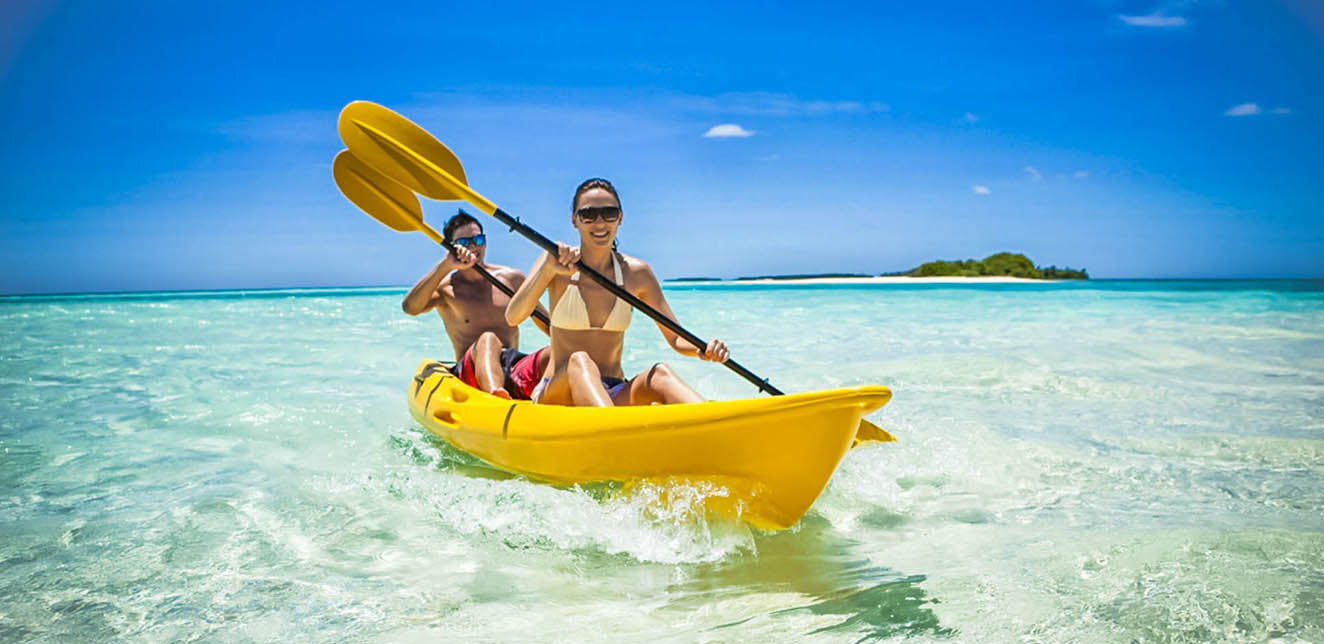Introduction
The Maldives is one of the most beautiful tourist destinations in the world as it is a group of atolls located in the Indian Ocean where the islands are protected by reefs that house unique and spectacular marine life.
The Maldives, located at the heart of the Indian Ocean, is a string of atolls on top of a vast underwater mountain range covering a land area no more than 298 km². The islands are encircled by turquoise lagoons with crystal clear water and they are protected by reefs that house unique and spectacular marine life. The country comprises 1190 islands of which 200 are inhabited by locals, and roughly 90 are developed as tourist resorts. The uninhabited islands are used for agriculture and other livelihood purposes.
People and Culture
From 1887 until gaining its independence in 1965, Maldives was a British protectorate Three years after independence, it became a republic in 1968. The Maldivian people are a homogenous mixture of Sinhalese, Dravidian, Arabian, Australasian, and African as a result of attributing genes from historical changes in regional hegemony through marine trade routes.
The mixing of cultures is very much seen in Maldivian arts. The music played with the local bodu-beru (big-drum) resembles that of African drumming. The dhoni (a unique Maldivian sailboat) is an art form itself built with skilled craftsmanship, with significant similarities to the Arabian dows. The fine artistry of Maldivians, seen in the intricate details on wooden beams in antique mosques, represents what we have gained from Southeast Asian architecture. Then there is the undefined: the distinct geometric designs used in mats woven from local materials, the embroidered neckline of women’s traditional dresses and their ornaments too, expose another story brought in from an unknown culture that has seeped into Maldivian society.
The official language of Maldives is called Dhivehi which differs in dialect in different regions of the country due to secluded nature and subsistent ways of island life. In the context of faith and region, Islam is the official religion but its supernatural beliefs continue to influence and play a major role in most of the island communities, giving credit to the folklore and Buddist traditions of the islands’ first settled before conversion to Islam in 1153 AD.
Maldivians are quite open to adaptation and are generally welcoming to outside inspiration. The culture has always continued to evolve with the times. Locals still eat fish and fishermen still spend days out at sea, but tourism now takes prominence. Most Maldivians still want to believe in upholding unity and oneness in faith, but recent waves of reform in the country have created a whole new culture of new ideas and attitudes. The effects of the modern world are now embraced, while still striving to uphold the people’s identity, traditions and beliefs.
Climate and Temperature
The climate of Maldives has two distinct seasons–the southwest monsoon occurs from May to November in which the rainy season comes in and the seas are moderate to rough whereas the northeast monsoon occurs and extends from January to March in which the dry season starts. In terms of temperature, the Maldives experiences a warm and humid climate throughout the year as the temperature is moderated by the presence of vast seas and oceans surrounding small islands.
For more information about weather in the Maldives visit www.meterology.gov.mv
State of the Environment
The Maldives is dependent on its natural environment as it is critical to the natural and cultural heritage of the country. The islands are protected by reefs that need to be alive so that the unique archipelago can continue to exist in the future. The marine ecosystems and resources are fundamental to the sustainable development of Maldives, providing food, construction materials, and a vast range of products, supporting the tourism and recreation industry. In order to achieve sustainable development, the coral islands are important to be developed by feeding the corals on the reefs to re-grow, and preserving their fish for livelihood as the tourism industry depends on it.
The environmental issues of the Maldives include depletion of freshwater aquifers which threatens water supply, coral bleaching, and inadequate sewage treatment as a result of which the Maldivian government set up several regulations to enable a system to provide natural protection for the fragile islands of Maldives. Since 1995, important marine areas have been designated as protected regions including legal protection for endangered marine species such as whales, sharks, turtles, dolphins, and corals. The bay-like lagoon in Baa atoll, Hanifaru, is among the most recently protected marine areas as it is the home to rays from around the Maldives that gather to feast on the masses of plankton brought into the lagoon by water current.

